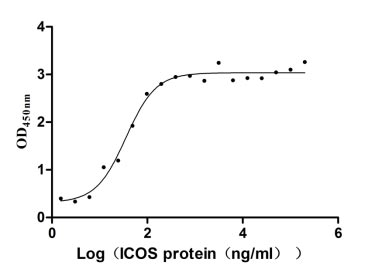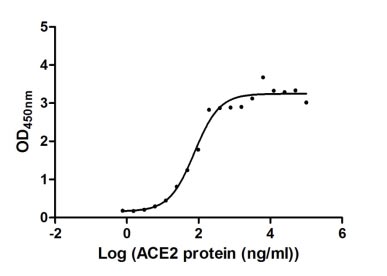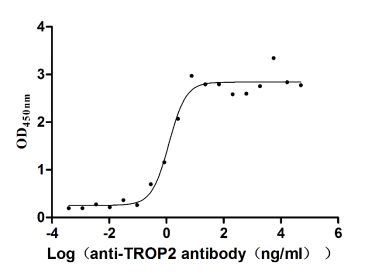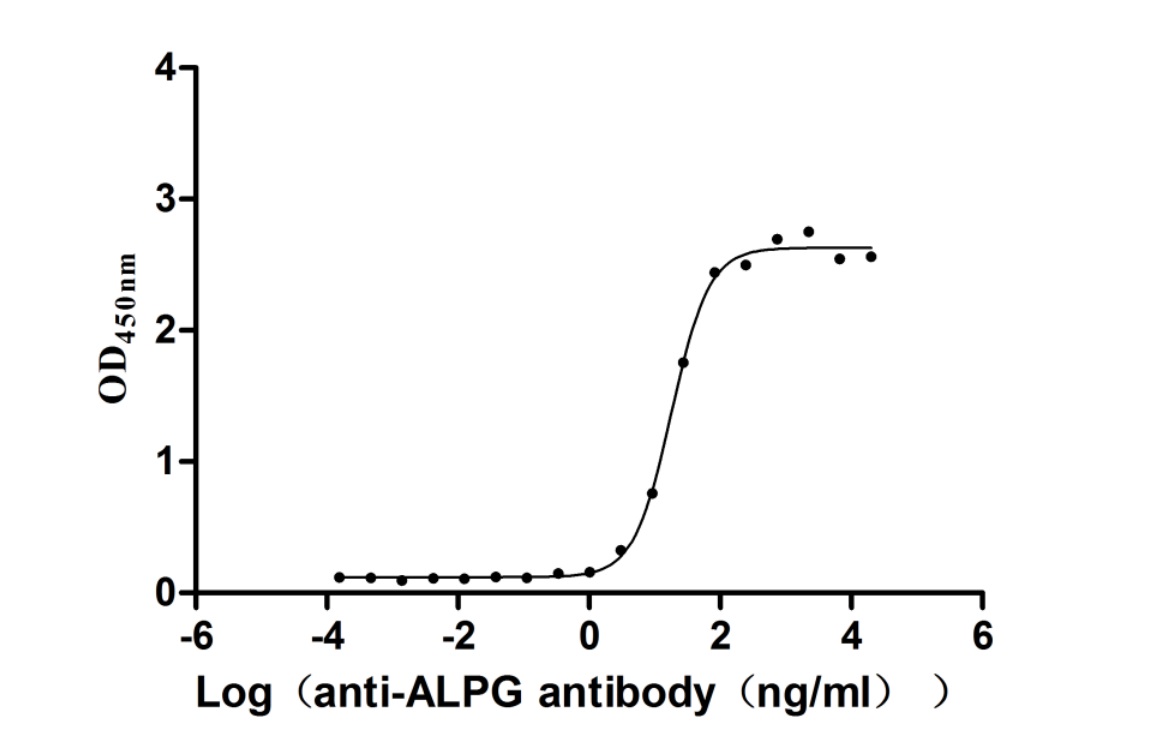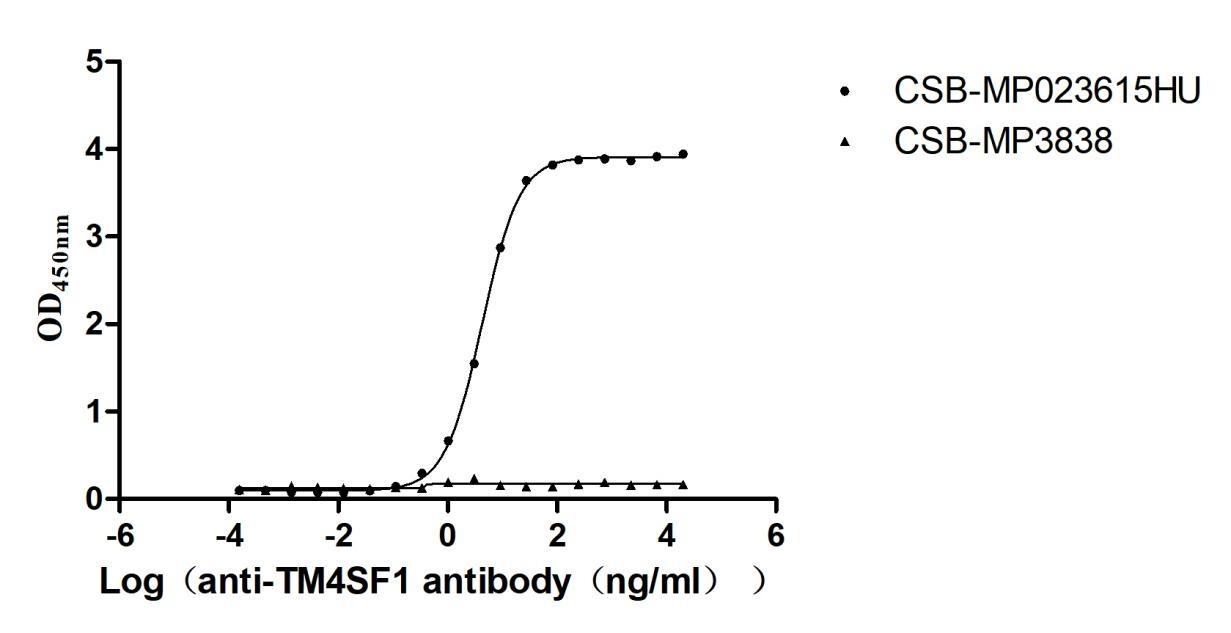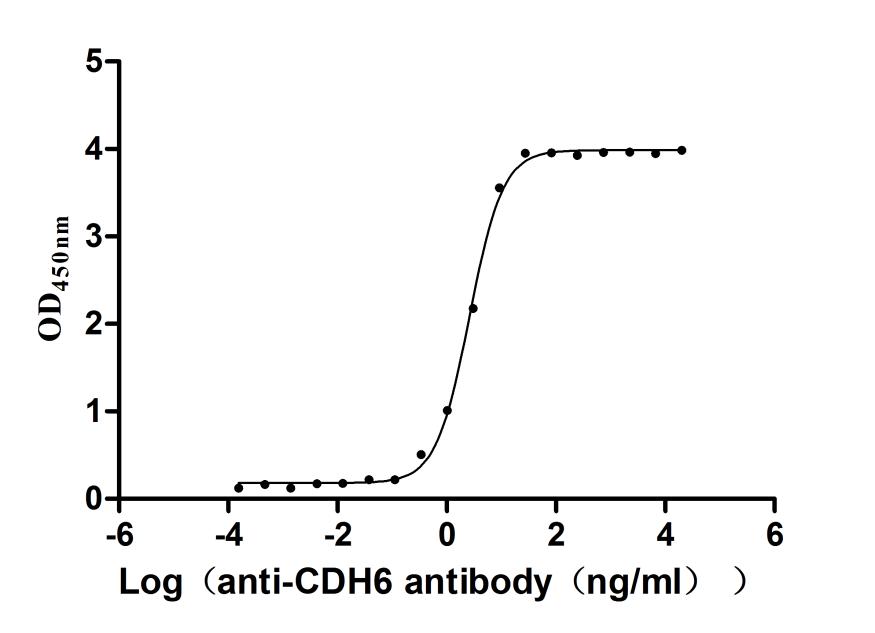Recombinant Human Acetyl-CoA carboxylase 2 (ACACB), partial
-
中文名稱:Recombinant Human Acetyl-CoA carboxylase 2(ACACB) ,partial
-
貨號(hào):CSB-YP001120HU
-
規(guī)格:
-
來(lái)源:Yeast
-
其他:
-
中文名稱:Recombinant Human Acetyl-CoA carboxylase 2(ACACB) ,partial
-
貨號(hào):CSB-EP001120HU
-
規(guī)格:
-
來(lái)源:E.coli
-
其他:
-
中文名稱:Recombinant Human Acetyl-CoA carboxylase 2(ACACB) ,partial
-
貨號(hào):CSB-EP001120HU-B
-
規(guī)格:
-
來(lái)源:E.coli
-
共軛:Avi-tag Biotinylated
E. coli biotin ligase (BirA) is highly specific in covalently attaching biotin to the 15 amino acid AviTag peptide. This recombinant protein was biotinylated in vivo by AviTag-BirA technology, which method is BriA catalyzes amide linkage between the biotin and the specific lysine of the AviTag.
-
其他:
-
中文名稱:Recombinant Human Acetyl-CoA carboxylase 2(ACACB) ,partial
-
貨號(hào):CSB-BP001120HU
-
規(guī)格:
-
來(lái)源:Baculovirus
-
其他:
-
中文名稱:Recombinant Human Acetyl-CoA carboxylase 2(ACACB) ,partial
-
貨號(hào):CSB-MP001120HU
-
規(guī)格:
-
來(lái)源:Mammalian cell
-
其他:
產(chǎn)品詳情
-
純度:>85% (SDS-PAGE)
-
基因名:
-
Uniprot No.:
-
別名:ACACB; ACACB_HUMAN; ACC-beta; ACC2; ACCB; Acetyl CoA carboxylase beta; Biotin carboxylase; HACC275
-
種屬:Homo sapiens (Human)
-
蛋白長(zhǎng)度:Partial
-
蛋白標(biāo)簽:Tag?type?will?be?determined?during?the?manufacturing?process.
The tag type will be determined during production process. If you have specified tag type, please tell us and we will develop the specified tag preferentially. -
產(chǎn)品提供形式:Lyophilized powder
Note: We will preferentially ship the format that we have in stock, however, if you have any special requirement for the format, please remark your requirement when placing the order, we will prepare according to your demand. -
復(fù)溶:We recommend that this vial be briefly centrifuged prior to opening to bring the contents to the bottom. Please reconstitute protein in deionized sterile water to a concentration of 0.1-1.0 mg/mL.We recommend to add 5-50% of glycerol (final concentration) and aliquot for long-term storage at -20℃/-80℃. Our default final concentration of glycerol is 50%. Customers could use it as reference.
-
儲(chǔ)存條件:Store at -20°C/-80°C upon receipt, aliquoting is necessary for mutiple use. Avoid repeated freeze-thaw cycles.
-
保質(zhì)期:The shelf life is related to many factors, storage state, buffer ingredients, storage temperature and the stability of the protein itself.
Generally, the shelf life of liquid form is 6 months at -20°C/-80°C. The shelf life of lyophilized form is 12 months at -20°C/-80°C. -
貨期:Delivery time may differ from different purchasing way or location, please kindly consult your local distributors for specific delivery time.Note: All of our proteins are default shipped with normal blue ice packs, if you request to ship with dry ice, please communicate with us in advance and extra fees will be charged.
-
注意事項(xiàng):Repeated freezing and thawing is not recommended. Store working aliquots at 4°C for up to one week.
-
Datasheet :Please contact us to get it.
靶點(diǎn)詳情
-
功能:Mitochondrial enzyme that catalyzes the carboxylation of acetyl-CoA to malonyl-CoA and plays a central role in fatty acid metabolism. Catalyzes a 2 steps reaction starting with the ATP-dependent carboxylation of the biotin carried by the biotin carboxyl carrier (BCC) domain followed by the transfer of the carboxyl group from carboxylated biotin to acetyl-CoA. Through the production of malonyl-CoA that allosterically inhibits carnitine palmitoyltransferase 1 at the mitochondria, negatively regulates fatty acid oxidation. Together with its cytosolic isozyme ACACA, which is involved in de novo fatty acid biosynthesis, promotes lipid storage.
-
基因功能參考文獻(xiàn):
- ACC2 gene (ACACB) expression was decreased by 25% in HCC tissue compared to non-cancerous liver tissue. PMID: 28290443
- PHD3 loss in cancer enables metabolic reliance on fatty acid oxidation via deactivation of ACC2. PMID: 27635760
- A significant association exists of ACACB gene polymorphism and diabetic nephropathy among Caucasian patients with diabetes. PMID: 26030797
- Our meta-analysis supports that the apolipoprotein E epsilon2 allele and acetyl-CoA carboxylase beta rs2268388 C>T might act as promotion factors of nephropathy in type 2 diabetes. PMID: 25262148
- The knockdown of ACC2 reduced palmitic acid -induced autophagy and thus protects the cells from palmitic acid - induced lipotoxicity with attenuated lipid accumulation and rescued cell viability. PMID: 26022126
- These data support a role for ACACB in obesity and potential roles for altered lipid metabolism in susceptibility to diabetic nephropathy. PMID: 23460794
- TT genotypes of ACACB gene (rs2268388) and CC genotype of AGTR1 gene (rs5186) confers the risk of diabetic nephropathy in Asian Indian patients with T2DM. PMID: 23081748
- Its involvement in the development of diabetic nephropathy is explained by the promotion of the so-called micro-inflammation associated with the diabetic state. PMID: 23156397
- A gene polymorphism in acetyl-coenzyme A carboxylase beta may be associated with the C-reactive protein level in a prediabetic and diabetic population. PMID: 21553357
- In conclusion, common polymorphisms of ACACB gene are associated with obesity and, independently, with type 2 diabetes in postmenopausal women PMID: 21908218
- Common variants within the ACACB locus appear to regulate adipose gene expression PMID: 21887335
- Structure-guided inhibitor design for human acetyl-coenzyme A carboxylase by interspecies active site conversion. PMID: 21953464
- The acetyl-coenzyme A carboxylase beta (ACACB) gene is associated with nephropathy in Chinese patients with type 2 diabetes. PMID: 20519229
- Acetyl-CoA carboxylase beta (ACC2) plays a key role in fatty acid synthesis and oxidation pathways. PMID: 20855566
- The -368 C/T single-nucleotide polymorphism in ACACB P-II binds HepG2 nuclear proteins that affect promoter activity in an allele-specific fashion. PMID: 20799892
- ACACB overexpression in renal proximal tubular epithelial cell increased proinflammatory cytokine expression, such as IL-6, at least partly by increasing mRNA stability through a p38 MAPK-dependent pathway. PMID: 20514549
- This study demonstrates that NRF-1 is a novel transcriptional inhibitor of the human ACCbeta gene promoter in the mammalian heart. PMID: 20599696
- These results suggest that ACACB is a strong candidate for conferring susceptibility for proteinuria in patients with type 2 diabetes. PMID: 20168990
- the crystal structures of the biotin carboxylase domain of human ACC2 phosphorylated by AMP-activated protein kinase was reported. PMID: 19900410
- The effect of a 3-month low-intensity endurance training program on fat oxidation and expression PMID: 12086953
- elevation of AMPK via phosphorylation is not sufficient to maintain elevated ACCbeta Ser(221) phosphorylation during exercise PMID: 12413941
- down-regulation of acetyl coa carboxylase 2 (ACC2) mRNA, induced by the lowering of plasma insulin concentration, is related to improvement of insulin sensitivity PMID: 14627750
- differential regulation of ACCbeta gene expression between tissues PMID: 15590647
- The expression, purification, and characterization of ACC2 were investigated. PMID: 17223360
- Human adipose tissue, unlike rodent adipose, expresses more ACC2 mRNA relative to the oxidative tissues muscle and heart. PMID: 19190759
- The human ACC2 CT-domain C-terminus is comprised of three intertwined alpha-helices that extend outwards from the enzyme on the opposite side to the ligand-binding site. PMID: 19390150
- results point towards major differences in ACC tissue distribution between humans and rats PMID: 19618481
顯示更多
收起更多
-
亞細(xì)胞定位:Mitochondrion.
-
組織特異性:Widely expressed with highest levels in heart, skeletal muscle, liver, adipose tissue, mammary gland, adrenal gland and colon. Isoform 3 is expressed in skeletal muscle, adipose tissue and liver (at protein level). Isoform 3 is detected at high levels in
-
數(shù)據(jù)庫(kù)鏈接:
Most popular with customers
-
Recombinant Human ICOS ligand (ICOSLG), partial (Active)
Express system: Mammalian cell
Species: Homo sapiens (Human)
-
Recombinant Human Angiotensin-converting enzyme 2 (ACE2), partial (Active)
Express system: Mammalian cell
Species: Homo sapiens (Human)
-
Recombinant Severe acute respiratory syndrome coronavirus 2 Spike glycoprotein (S), partial (Active)
Express system: Mammalian cell
Species: Severe acute respiratory syndrome coronavirus 2 (2019-nCoV) (SARS-CoV-2)
-
Recombinant Human Tumor-associated calcium signal transducer 2 (TACSTD2), partial (Active)
Express system: Mammalian cell
Species: Homo sapiens (Human)
-
Recombinant Human Alkaline phosphatase, germ cell type (ALPG) (Active)
Express system: Mammalian cell
Species: Homo sapiens (Human)
-
Recombinant Human Transmembrane 4 L6 family member 1(TM4SF1)-VLPs (Active)
Express system: Mammalian cell
Species: Homo sapiens (Human)
-
Recombinant Human Cadherin-6(CDH6),partial (Active)
Express system: Mammalian cell
Species: Homo sapiens (Human)
-
Recombinant Human Kidney-associated antigen 1(KAAG1) (Active)
Express system: Baculovirus
Species: Homo sapiens (Human)


